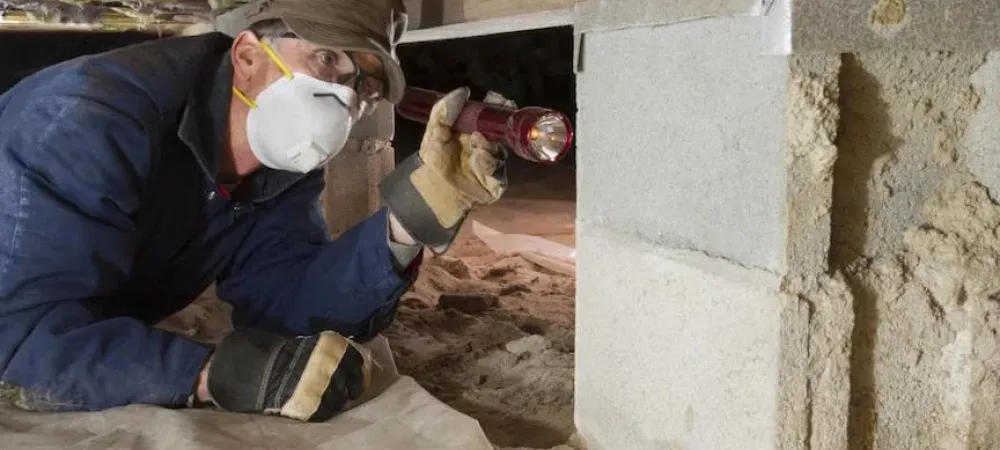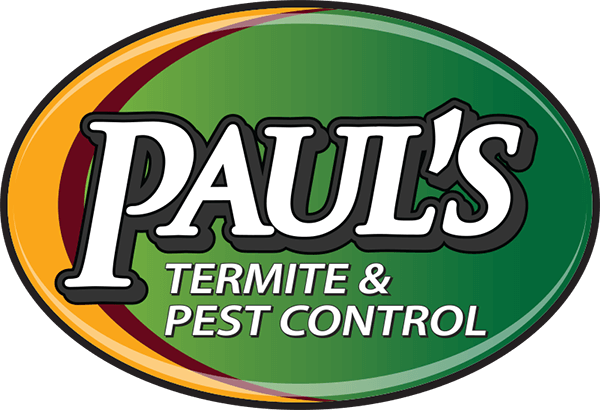How to Get Rid of Termites in Your Florida Home

We all wish termites didn’t thrive in our warm, humid climate. We also wish they didn’t eat away at our homes and cause billions of dollars worth of damage every year. But unfortunately, they do, and we have to learn how to do our best to fight against them. Here at Paul’s Pest, our experienced exterminators fight against termites almost every day. We wanted to share our knowledge about detection and treatment so that you, as a homeowner, can prevent costly damage to one of your biggest investments.
Common Termites in Florida
It is no secret that Florida is a popular home for all kinds of insects. As professionals, we see several different kinds of termites when we eliminate them from our customers’ homes. These are the species we typically come across:
- Eastern subterranean termites
- Formosan subterranean termites
- Powderpost drywood termites
- Florida dampwood termites
How to Detect a Termite Infestation
Inspecting your home at least once a year could save you thousands of dollars in damage. That is why we recommend that everyone periodically checks their home for termites. Not sure what to look for? These are the first places you should check:
- Crawl space. These tend to be damp and dark, creating the perfect living conditions for termites. Sometimes a crawl space is very narrow or doesn’t get much light, so you might want to let a professional handle crawl space termite treatment.
- Your foundation. Walk around the base of your foundation. Anywhere that your wood foundation touches the soil is a place to start searching for termites.
- Attic. Walk through your attic. Look for termites and tap the wood with a screwdriver to see if it sounds hollow.
- Holes in concrete. Sometimes termites will live in holes that aren’t in wood, so be sure to check your driveway or walkways for holes.
- Mulch. Never have mulch touching your home if you can avoid it. Termites will live in mulch and can easily move from there to your home.
- Firewood. Check any piles of firewood and move them at least 30 feet away from your house.
- Window sills and door frames. Termites could be living in the wood that you use daily, so don’t underestimate how close they can already be to you.
- Old tree stumps. These insects love living here, so look at any old wood on your property.
Learn More About Our Termite Treatments
Telltale Signs You Have a Termite Problem
- Mud tubes. Some termites live underground, and they use mud tubes to move around and have access to water. If you see small mud tubes around the outside of your home, then you have a problem.
- Frass. This is termite feces. They are small, hard, and oval, and termites produce a lot of them as they destroy your home.
- Piles of small wings. Swarmers fly to an area and drop their wings when they want to mate and start a colony.
- Hollow-sounding wood. If you tap wood, and it sounds hollow, it probably is. Hopefully, it’s because the wood is supposed to be that way, but if it isn’t, you probably have termites eating the wood from the inside out.
- Cracked paint. When termites eat away the inside of something, the outside will become distorted. Cracked paint is a good way to tell that they are inside a piece of wood.
Treating for Termites in Florida
If the problem is small, you might be able to fight the termites by yourself. These solutions are what we would recommend to those brave enough to wage that war:
- Bait station. Put things that termites like to eat in a bait station, like cardboard and pieces of wood, and put that near the colony. Coat the bait with poison like boric acid or bait that can be found at most hardware stores. The bugs come, eat the bait, then go back to the colony to die. When they die, other termites eat them, and then they will die.
- Orange oil. This can be used as a preventative measure or to kill termites. If you see them and can spray them, use orange oil. You can also apply this to areas in order to stop an infestation from getting worse.
- Heat. Extreme heat or cold will kill them. Cold isn’t really an option here in Florida, so heat is a better method. If you have a colony living underground, pour boiling water into it.
- Liquid repellent. These sprays will deter termites from spreading and can potentially stop an infestation from starting in the first place.
- Liquid non-repellent. This is a liquid that kills termites when they touch it. They can’t detect that it’s there, and once they’re walking over the liquid, it’s too late for them.
Of course, the best way to treat termites is with professional help!
Leave it to the Professionals
If you choose to fight against termites, we wish you the best of luck. It can often be difficult to judge whether you’ve exterminated the entire termite colony, which is why we always recommend professional treatment for such a potentially expensive problem. At Paul’s, we understand nothing is more important than protecting your family and the investment you made in your home - and we’re here to help!
We offer pest control in:
This blog was written by Kent D. Edmunds, CEO of Paul's Pest Control. Kent has been working with Paul's Termite & Pest Control since 1989 and is a certified pest control operator in both Georgia and Florida!
Frequently Asked Questions
Are Termites Attracted to Light?
Termites are attracted to light when they are swarming. Once they shed their wings, they are no longer attracted to light.
Can You Kill Termites in the Wall?
You can attempt to kill termites that are in your wall with our recommended treatment options above. However, since it is difficult to determine if you've eliminated an entire termite colony, the best way to kill termites in the wall is with professional help.
How Long do Termites Swarm?
Termites swarm for about 30-40 minutes, and then the wings are discarded. Termite swarming season can last for 5-6 months, usually in the spring.
